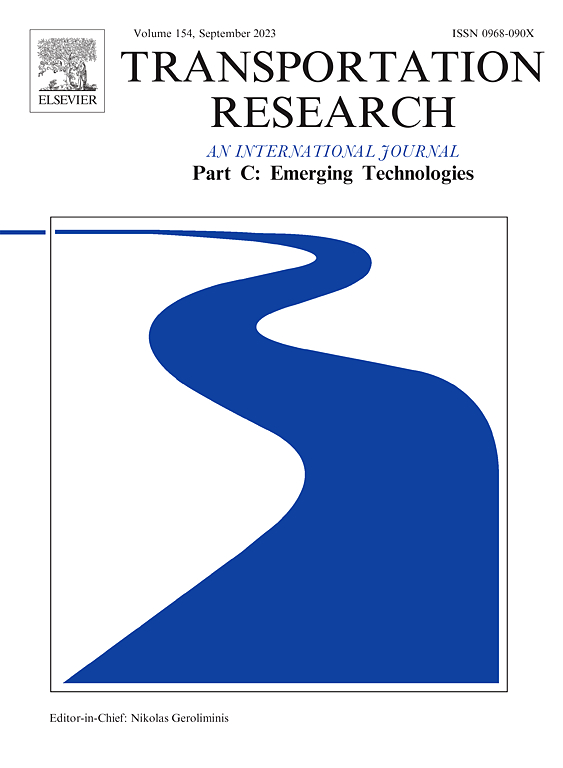Low-rank approximation of path-based traffic network models
IF 7.6
1区 工程技术
Q1 TRANSPORTATION SCIENCE & TECHNOLOGY
Transportation Research Part C-Emerging Technologies
Pub Date : 2025-02-13
DOI:10.1016/j.trc.2025.105027
引用次数: 0
Abstract
Traffic network models have been widely used in transportation planning and management. However, the use of path sets in certain models introduces practical issues to the applications of those models in real world, due to the large number of paths in a network that usually cannot be explicitly enumerated. To reduce the size of the path set and thus make such network models more applicable in practice, we propose a novel method to generate a small hypothetical path set tailored for network flow models in a way analogous to low-rank matrix approximation. The generated hypothetical path set are no longer based on the topological structure of the network, but on traffic flows in the network, making it possible to represent the information of the original path set in the context of network modeling with a much smaller set. The hypothetical path set is created through fitting a surrogate traffic assignment model, which could be employed as a replacement of the original model in a variety of transportation network design problems. In addition, the reduced hypothetical path set itself, even though does not fully preserve the physical information of the original path set, may also be directly used in network modeling. As an example we show an efficient way to estimate origin–destination travel demands with the reduced hypothetical path set. Proposed methods are examined on four toy networks and one real-world network. Numerical experiments show the proposed methods could well approximate the original network models, and meanwhile bring nontrivial improvement in run time efficiency and large-scale data calibration of path-based network models.
求助全文
约1分钟内获得全文
求助全文
来源期刊
CiteScore
15.80
自引率
12.00%
发文量
332
审稿时长
64 days
期刊介绍:
Transportation Research: Part C (TR_C) is dedicated to showcasing high-quality, scholarly research that delves into the development, applications, and implications of transportation systems and emerging technologies. Our focus lies not solely on individual technologies, but rather on their broader implications for the planning, design, operation, control, maintenance, and rehabilitation of transportation systems, services, and components. In essence, the intellectual core of the journal revolves around the transportation aspect rather than the technology itself. We actively encourage the integration of quantitative methods from diverse fields such as operations research, control systems, complex networks, computer science, and artificial intelligence. Join us in exploring the intersection of transportation systems and emerging technologies to drive innovation and progress in the field.

 求助内容:
求助内容: 应助结果提醒方式:
应助结果提醒方式:


